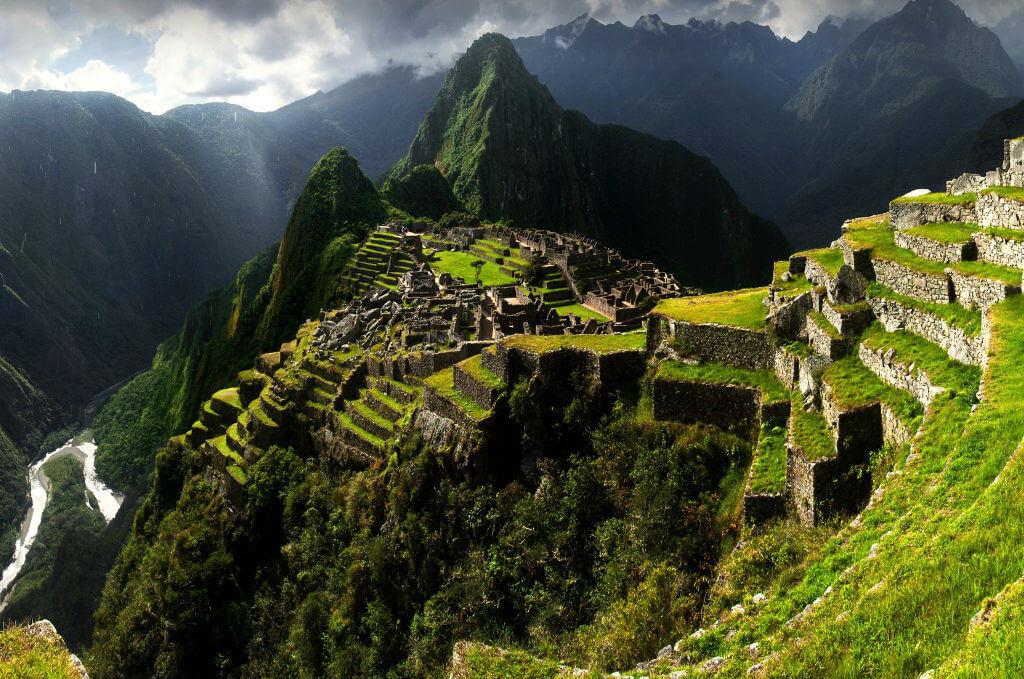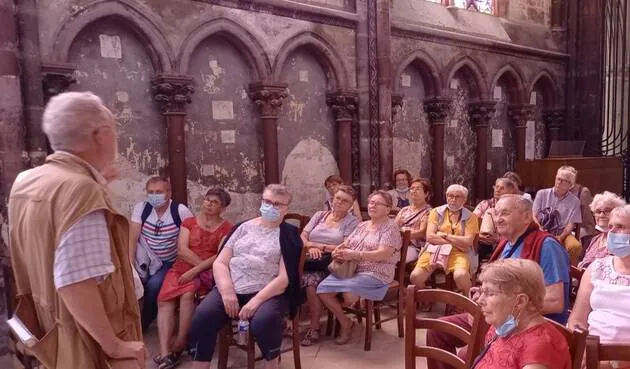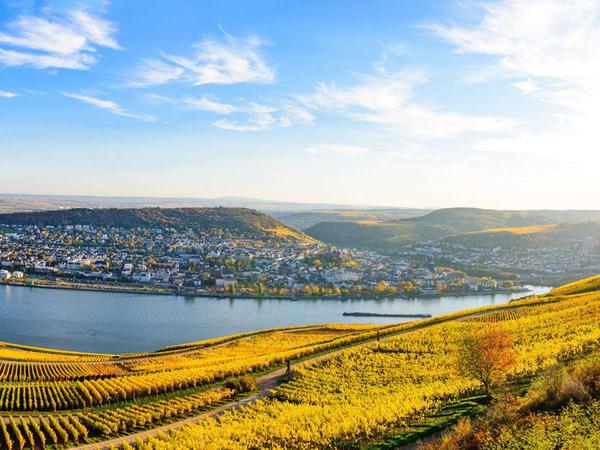Gran Canaria also has its own Machu Picchu
We start the route in Agüimes, 15 kilometers from the airport and 35 from Las Palmas de Gran Canaria, where the numerous sculptures and murals have filled every corner of its old town with color and art, turning it into an open-air museum free. But in this town, what also attracts attention are the panoramic views of the Guadayeque ravine in which it is located, with its vertical slopes covered with almond trees and troglodyte houses that pierce its landscape around the hermitage of San Juan Bautista (aguimes.net )
VIEW GALLERY
Driving along the winding GC-550 road that ascends in search of the Tirajan ravine, we will cross a beautiful landscape of ravines, mountains... and olive trees! Yes, those from Temisas, which are the origin of a fruity virgin olive oil that is highly appreciated as it grows on volcanic soil. Once here, it is a good idea to take some time to look out at the universe in its Astronomical Observatory (astrotemisas.probooking.es), because the Canarian sky is one of the cleanest in the world for a reason and is ideal for contemplating the firmament.
VIEW GALLERY
LA FORTALEZA
In the vicinity of Santa Lucía, the three rocks that make up La Fortaleza make their appearance, one of the most important archaeological sites in Gran Canaria, as it is believed to have been one of the two temples where the aborigines of these lands approached the gods. The effect of the last ray of the sun passing through the natural cavity opened at its summit meant that each summer solstice became a place of pilgrimage due to its sacred nature.
VIEW GALLERY
In this Machu Picchu on the Canary Islands, inhabited since the 6th century AD, we can admire a set of rock carvings, remains of defensive walls and stones where, it is believed, the first settlers thanked the divinities for the cycles of the seasons. Next to the site we find an exhibition center where we can delve deeper into the discovery of this archaeological space and, incidentally, get to know what the daily life of the inhabitants of the town was like thanks to an audiovisual recreation.
THE MOST FAMOUS ROCKS ON THE ISLAND
To admire the most famous rocks on the island, you have to continue heading towards the Tejeda caldera, the mark left by a violent volcanic explosion 14 million years ago. In this territory of steep ravines, two imposing basalt rock monoliths stand out: Roque Nublo, which with its 80 meters high occupies the geographic center of the island; and Roque Bentayga, the largest and a place of worship of a pre-Hispanic settlement, which has an interpretation center at its feet.

VIEW GALLERY
But on this island, which is a Unesco Biosphere Reserve and in this environment, what is essential is to sign up for hiking. The essential route leads to Tejeda, with a picturesque hamlet that is among the most beautiful in Spain. With the impressive La Aldea ravine at its feet and Teide to the west, the sunsets from this point are always spectacular.
VIEW GALLERY
Pinned to Wiki for Blind on @Pinterest: How To apply for a kenyan identity card https://t .co/LaRha1ENda
— Wiki for Blind Wed Nov 09 06:59:04 +0000 2016
Do not miss: Top 10 of Gran Canaria, which sites do you have to discover first?
VIEWPOINTS
Another of the memorable places to watch the Gran Canarian sunset is the La Cilla viewpoint, in the town of Artenara, which also preserves an exceptional group of cave houses. And also the Cruz de Tejeda, that crowns this mountain pass at an altitude of 1,580 m. It is the gateway to the island peaks, a landscape of volcanoes covered with Canarian pines that gradually break into deep ravines that descend towards the sea. There are many paths that we can follow and offer magnificent views, such as the Pico de las Nieves, at 1,949 m, its best vantage point.
VIEW GALLERY
CALDERA DE LOS MARTELES
Another option in the summit area is to follow the circular path of just over 7 kilometers that crosses the landscape of Caldera de los Marteles, created by a volcanic eruption a year ago. million years old and that reveals impressive rocks resulting from erosion and endemic plant species.
We descend from the peaks to the northeast following the Guiniguada ravine. In it is the orchard of Vega de San Mateo, whose lively agricultural market on Sundays is the best display of the fruits of its rich orchards irrigated by the abundant streams of the place.
Do not miss: Surprise plans in Gran Canaria, the safest Spanish destination
BANDAMA CRATER
When it seems that the volcanic geography is softening, less than half an hour away, the Bandama crater emerges, extending over the Las Goteras and Guiniguada ravines. With a diameter of one kilometer, 574 meters high and 216 meters deep, it was formed 5,000 years ago next to the ancient Pico de Bandama volcano, although what is observed is the result of an eruption 1,970 years ago, the youngest on the island.
VIEW GALLERY
Visiting the Bandama crater from the beautiful hamlet of the same name is a demanding route, but the reward is walking among tajinastes and Canarian incense until reaching the old farm fields and Malvasia vineyards planted after colonization by a Flemish entrepreneur named Van Damme, to whom the caldera owes its name. If what you are looking for is its best perspective, you have to head towards the neighboring Bandama peak. Accessible by road, it offers an extraordinary panorama with the Real Club de Golf de Las Palmas, the dean of Spain, on the edge of the caldera.
AND IF YOU DARE
Try the canary jump (shepherd's jump) and the whistle, two traditional activities that helped mountain dwellers to navigate these rugged lands and communicate from a distance between ravines. The active tourism company Climbo Rocks (climbo.rocks) teaches you to practice these activities during its hiking trails. In this environment you can also feel the excitement of canyoning, the vertigo of a via ferrata and climbing.
Do not miss: In the Guanche heart of the island
WHERE TO SLEEP
Las Calas(hotelrurallascalas.com), in Vega de San Mateo, is a mansion from the year 1800 that combines the rural charm of its rooms and garden with the comforts of a modern hotel in field. With a Canarian style, El Mondalón (hotelruralmondalon.es), in Los Hoyos, offers among its experiences wine tourism on the farm itself or walking the local trails, such as the one that leads to the Bandama crater. It also has a restaurant. In Cruz de Tejeda and in the middle of nature is El Refugio (hotelruralelrefugio.com), a typical Canarian mansion ideal as a starting point to walk the paths and contemplate the rocks. Overlooking the immense caldera of Tejeda, the Parador Cruz de Tejeda (parador.es), with a spa and hydrothermal pool.
VIEW GALLERY
WHERE TO EAT
In Agüimes, El Populacho (tel. 928 78 45 14) is a gastrobar with the flavor of an old grocery store that has a pleasant snack menu of Canarian flavours. YGuayadeque (tel. 928 17 87 44), a must when touring the ravine that gives it its name, not only for being installed in a cave, but for trying its fried pork, pork and chicken baked in a wood oven and its barbecues.


